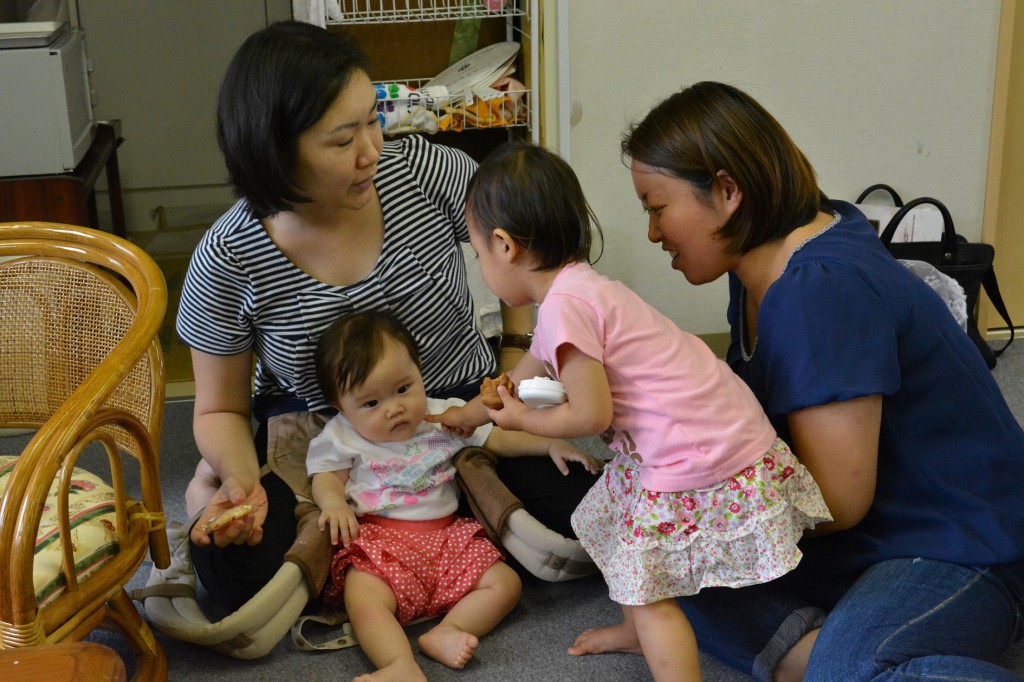Hiroko Obara
Nearly 100 families who evacuated from Fukushima Prefecture after the Fukushima No.1 nuclear power plant accident live in Shirasagi Apartment, a municipally-owned, 12-story apartment building located in a quiet residential area in Nakano ward, Tokyo.
Evacuees have been holding meetings once a week in a temporary meeting room in the building since September 2011. Two and a half years after the accident, more than 30 people still attend the weekly meeting called Kirasse (meaning “welcome”) Salon. In the salon, elderly people take care of children and listen to young mothers’ worries.
“I feel relaxed coming here, looking at children’s smiling faces,” says Norio Takamatsu, 66, who had been engaged in farming in Okuma, Fukushima, before the accident. A mother in her 30s who evacuated from Kawauchi, Fukushima, says although the government does not give her sufficient explanation, she appreciates the fact that she can obtain various pieces of information in the meeting. The salon is offering emotional support to evacuees.
The salon is operated by the Nakano Council of Social Welfare. Evacuees are also working there as staffs, offering legal consultations and job application information to other evacuees. “We were able to continue the salon with the help of the residents’ association and volunteers,” says council staff Yu Miyajima, 24. “We hope the salon will continue to be a fun place where people can meet and speak in their own dialect.”
Nevertheless, all the people who gather at the salon are carrying great burdens of worries hidden behind their smiles. When can they return home? Will they be able to start farming again? How will the children’s future turn out?
“I want to return to Fukushima to be near my parents (who still live there), but I don’t want to go back when I think of my daughter,” says Hiromi Ishizawa, 36, who evacuated to Tokyo from Minamisoma, Fukushima. “I fear my daughter would be discriminated in the future because she is from Fukushima,” Ishizawa says, holding her less-than-a-year-old daughter in her arms. She cannot imagine a bright future even two and a half years have passed since the accident.
She returns to Fukushima once a month to show her daughter to her parents, but transportation costs are giving her a burden, as roads to her parents’ house are still not reconstructed and she cannot take the shortest route.
Some of the other evacuees have not returned to Fukushima at all, as they cannot drive.
Evacuees are also facing housing problems. Many of the people who evacuated to Nakano are living in municipally-owned housings, and under the current system, public subsidies are available only for three years after moving in. The municipal governments of the disaster-hit areas and areas which accept evacuees are discussing extending the subsidies, but the people are worried because they are not sure whether they have to leave or pay the regular amount of rent after three years.
“The whole town is talking about nothing else but the (2020 Tokyo) Olympics,” says Ishizawa. “People are forgetting about disaster victims who are still suffering.”
(Sept. 13, 2013)


